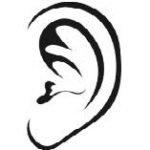EAR-Q

Summary
Ear conditions such as microtia and prominent ears affect ear appearance, presenting a challenge for children and young adults who feel self-conscious about it. An important aspect of the treatment for patients with ear anomalies is directed at improving appearance and function. In response to the need of an ear-specific, valid and reliable patient-reported outcome instrument, Dr. Anne Klassen at McMaster University, along with Dr. Karen Wong developed the EAR-Q.
The EAR-Q includes 2 scales outlined as follows: an 18-item appearance scale (e.g., size, shape, look up close, look in photographs) and a 12-item postoperative adverse effect scale (e.g., itchy, painful, numb). There are also 2 stand-alone items that ask about appearance of ear scars.
The EAR-Q is a self-report tool that should be answered independently by patients themselves, without interpretation by the parent(s) or healthcare provider. The EAR-Q is utilized in academic research and observational studies. It can also be used in clinical practice and in research to understand the patient’s perspective of outcomes following ear surgery.
To meet increasing demand for electronic versions of questionnaires, the EAR-Q is available in electronic format as well as in hardcopy. MILO is also continuing to increase the portfolio of validated translations for questionnaires.
Therapeutic Areas
- Protruding ears
- Microtia
- Ear injuries
Applications
- Academic studies
- Observational studies
- PRO instrument
Advantages
- Use in hardcopy or electronic
Contact
MILO Business Development

